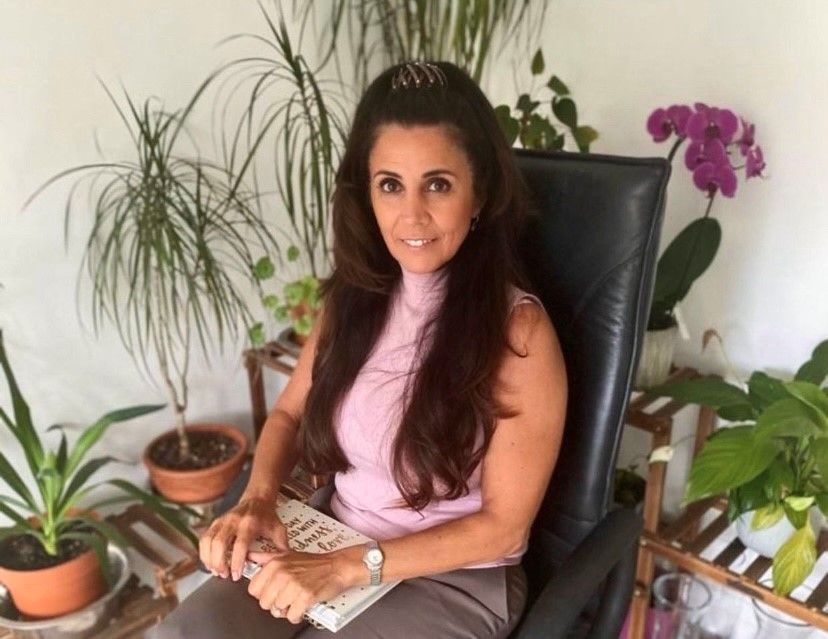Diagnosed of ADHD at 50: a Life Changing experience

Diagnosed of ADHD at 50: a Life Changing experience
Introduction
Two men in their 50s receive an ADHD diagnosis which changes their lives:
J’s email to myself within a week of starting medication: “I am a completely different person now Dr. The transformation is beyond comprehension.
I’ve never looked forward to my life in the past, ever, and I’m 50 now.
Thank you so much!”
M’s email to myself after 4 days on medication: “It’s been an absolute game-changer for me and the family and thank you so much once again for your fantastic support”.
Aim of this Article
The purpose of this article is to raise awareness amongst mental health professionals to look deeper into “apparent” presentations and think of possible underlying conditions such as ADHD perpetuating symptoms and only allowing to partial improvements.
It is also aiming to raise awareness in everyone on how pervasive ADHD is and how it is worth to understand one’s difficulties and mental health challenges in order to search for the right help and support.
A diagnosis of ADHD and consequent treatment can change not only a person’s life but also his family’s (due to the extended impact on the whole family) as described below.
Following from the above, not everyone with ADHD requires a diagnosis or medication. To explore this further there is an article on my website www.mindyrlife.com which explores diagnosis further “ADHD… Diagnosis or Not”.
Prevalence of ADHD as Diagnosis and as Presentation, two different things!
Indeed, I believe there are many people out there with ADHD who are doing just fine without a diagnosis; there may be many different reasons for this including individual, family and/or environmental supportive and protective factors.
One or more of these “protective factors” have enabled them to compensate for the challenges that come along with ADHD. They’re not even likely to be aware they have ADHD.
Furthermore, I believe there are more people with an ADHD-like presentation who don’t have a diagnosis than those who have actually received a formal diagnosis.
This is explained by the fact that a diagnosis of ADHD is only given when symptoms impact sufficiently on daily functioning which means that someone could have an ADHD presentation but wouldn’t meet the criteria for diagnosis as they’ve got protective factors, most commonly high IQ, which reduce the impact of their ADHD symptoms on their daily functioning (such as impact on academic performance in school, working performance, social vulnerability and others).
ADHD Diagnosis + Treatment changing Lives after the age of 50:
Two similar stories of two men aged 50 and 58 who, after struggling all their lives with depression, anxiety and other mental health problems, get a diagnosis of ADHD in their 50s which changes their lives when medication is prescribed.
In the last 6 months, I have diagnosed two men in their early and late 50s with ADHD.
When I first met them, they were both presenting with depression and anxiety; therefore, we agreed to “treating” those first.
As I explained to them, it’s not right to assess ADHD when depression and anxiety are present since these “mimic” ADHD symptoms and, therefore, any evaluation of ADHD symptoms would be inaccurate and biased.
In other words, the 3 symptoms of ADHD, inattention, hyperactivity and impulsivity are seen in anxiety; if someone is feeling anxious, they are “hypervigilant” and won’t be able to concentrate well on anything (inattention); if someone is anxious, they’ll be restless and fidgety (hyperactivity) and equally more likely to startle, over-react and respond with “fight/fight” (impulsivity).
On those bases, unless the anxiety is well managed, accurately assessing ADHD is much harder.
Indeed, I have seen misdiagnoses of ADHD in people with chronic anxiety as well as seeing people with chronic anxiety never diagnosed with ADHD as everything was explained on the basis of the anxiety. Hence why it’s so important to be aware of the comorbidity of both conditions!
J’s story
J had been diagnosed with Bipolar disorder when he was in his mid 20s. He had then been prescribed Lithium which made him feel unwell so eventually stopped.
He had suffered with mood swings, depression and anxiety throughout all his life.
For a number of years he had used alcohol as a coping mechanism which helped him feel more settled and released when under the influence but, of course, didn’t help with his difficulties in the longer term (on the contrary, and as expected, made things worse.)
J tried to get professional help many times but all professionals ever saw were the “outer layer”, his mood swings and attempts to self-medicate with the use of alcohol.
I met J a bit before he was turning 50. He had heard about ADHD and asked if an assessment could be done. It was evident that J was presenting with clinical depression and chronic anxiety as well as long term sleep problems.
Based on his presentation, we needed to prioritise managing his depression/anxiety before we could really look into the likely underlying ADHD.
When we did so, J’s responded very well to antidepressant medication and his mood soon lifted as his anxiety reduced therefore managing daily life better.
It was then time to look at his ADHD symptoms and his chaotic lifestyle.
As it’s often the case, ADHD questionnaires took ages to be returned as J misplaced them several times (before and even after completing them) which delayed the assessment a few months.
J had a Qb Check which, again as expected, scored him highly for the 3 ADHD symptoms, in line with the diagnosis. J was shocked at how highly he had scored.
Once we formalised the diagnosis, J had conflicting emotions about it; on the one hand he felt frustrated and even angry at the fact that he had been going for professional help during the previous 25 years and no one had thought of ADHD and, on the other hand, J was hugely relieved with hopeful after a very long time.
J then looked forwards to a trial of ADHD medication, yet also felt rather anxious about it.
We then discussed medication options and, after the relevant physical health checks, J started a neurostimulant. The response was almost immediate and the impact on his life impressive.
J shared with me that not only he was aware of the massive difference but everyone around him, family members, friends and work colleagues had commented on the change. J was absolutely delighted with it.
J has not been on antidepressants for several months and his mood has remained stable (actually he presents brighter and happier than I had ever seen them since meeting him a year before).
J had also been prescribed Circadin for many months to help with his sleep but he was no longer needing them.
His daughter is now undertaking an ADHD assessment as J recognises the ADHD symptoms in her.
M's Story
M’s daughter was first referred to me and during our first consultation she enquired about a possible ADHD presentation.
Whilst M’s daughter had been researching ADHD, M had seen the resemblance of the symptoms on himself and so, also enquired about ADHD.
On meeting M and exploring his mental health history, he shared he had been prescribed antidepressants at variable dosages, on and off, for years. My advice was to take them again and we adjusted the dosage accordingly to manage both the low mood as well as the anxiety symptoms.
M also had major problems with sleep both during the day in that he would dozed off as soon as he sat down, but also during the night when he could only get a few hours of sleep leading to chronic tiredness.
Once M responded to the antidepressant medication and there was an evident improvement on his overall presentation, we agreed to undertake an ADHD assessment.
M completed the ADHD questionnaire and so did his wife to have another reference. M then undertook a Qb Check which he was convinced he’d do very well on.
M was surprised on how challenging he found to do the Qb test and was taken back with his performance and high scoring on all the 3 symptoms of ADHD, in line with an ADHD diagnosis.
When M received the diagnosis of ADHD, he also had mixed feelings: “I have mixed emotions about the diagnosis ranging from massive relief to frustration at not acting on it sooner!”
As I responded to M’s self-critical comment, his IQ is likely to be well above average and, most possibly, will have masked his severe inattention.
Furthermore, it’s really encouraging to see how a man in his 50s has the courage to pursue an ADHD diagnosis aiming to improve his quality of life regardless of any potential stigma.
So in my view, it deserves huge ADMIRATION with no room left for self-disappointment, only CELEBRATION.
We discussed ADHD medication alternatives on the basis of M’s needs and profile and agreed to a trial of neurostimulant medication also.
His response was fantastic as he states on his email shown above.
M is also presenting much brighter than prior to starting the ADHD medication and, as he’s more focused and so more “aware”, he feels more in control over his life and, as a consequence, less anxious.
Another indirect benefit from the ADHD medication is the improved sleep; now that M is so much more proactive and efficient during his working day, he’s not dozing off when he sits down and he’s sleeping much better (both because he’s more tired, physically and mentally but also less anxious as feels more in control over his life).
When spoken to M’s wife, she also shared how impressed she was with the “new M” and described him as much more efficient, active, aware …
She added that his improvement was positively impacting on the whole family and she was delighted M was now doing things he had never been involved with before such as booking holidays for the family.
TAKE HOME MESSAGE:
Whilst accepting limitations, let’s never give up on IMPROVING our quality of life.
Let’s continue to LEARN on daily basis by keeping a curious attitude and an open-minded approach.
Today perhaps we can learn about ADHD DIAGNOSIS in ADULTHOOD…
COMMON BARRIERS:
- Age (adults over 40 years of age) as less “pure” presentations and therefore more challenging to diagnose.
- Comorbidities; presenting with other mental health conditions commonly depression/anxiety which may appear more relevant.
- Most adults only seen by Primary Health services with less knowledge on ADHD- limited training on neurodiversity (ADHD and ASD) in adult mental health professionals who therefore tend to miss conditions typically from childhood/adolescence.
- Misdiagnosis, most commonly bipolar disorder and personality disorder (which is different to presenting with comorbid conditions).
- Limited awareness and understanding of ADHD, particularly when comorbidities present (which is often the case in childhood but most likely in adulthood)
- Misconceptions on ADHD.
TIPS to RAISE AWARENESS:
- Incredibly high genetic loading… make the link between ADHD presentations passed on through generations.
- Think about the ADHD presentations being life long (how it showed in school).
- Be mindful that by adulthood there will be many stablished coping mechanisms that have got you through life (some of them may not be too healthy) and these may mask the ADHD symptoms.
Closing Statement
Let’s always have an attitude of APPRECIATION and GRATITUDE as this is a wonderful way to maintain a positive mindset and become happier…
“Today I’m grateful to J and M for trusting me to help them and, in doing so, making my job so incredibly rewarding.”




Diagnosed of ADHD at 50: a Life Changing experience










